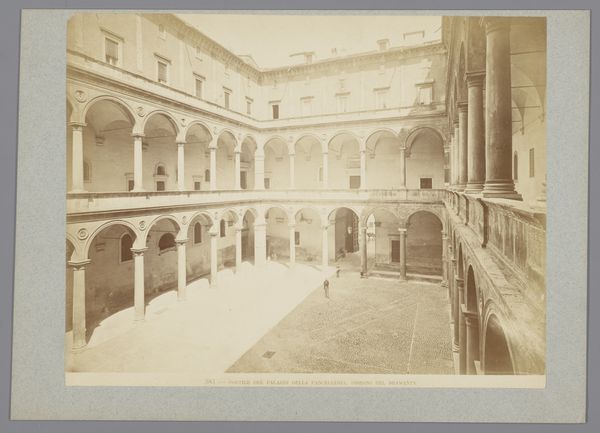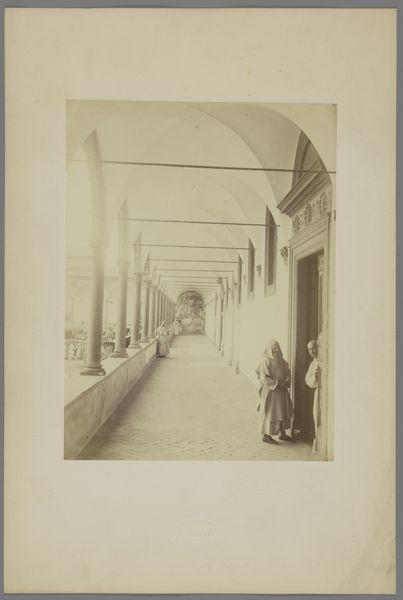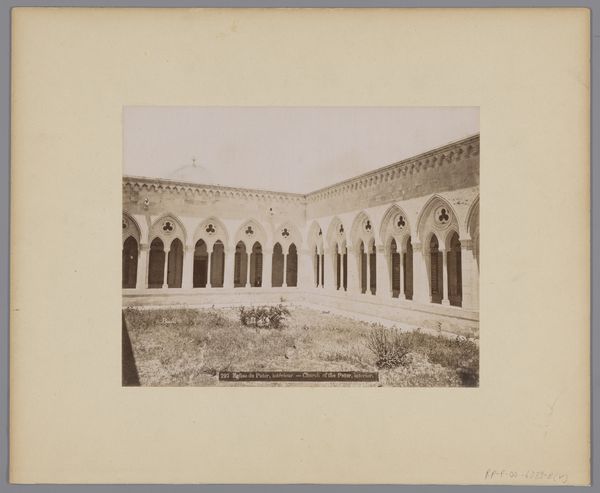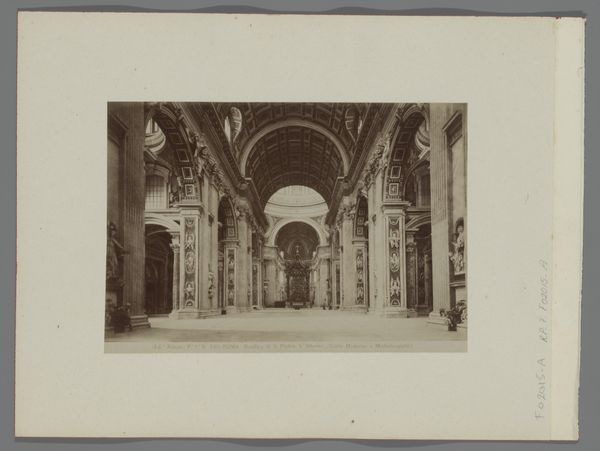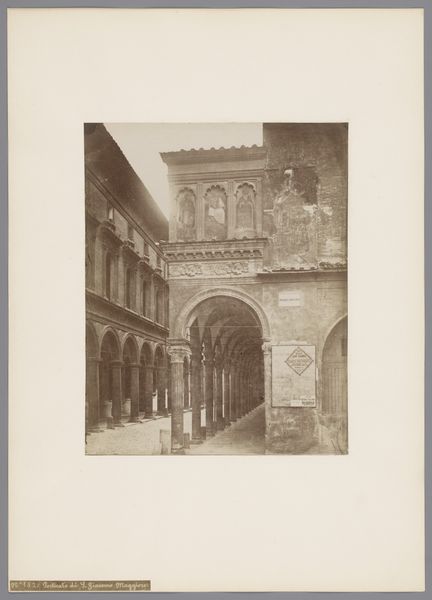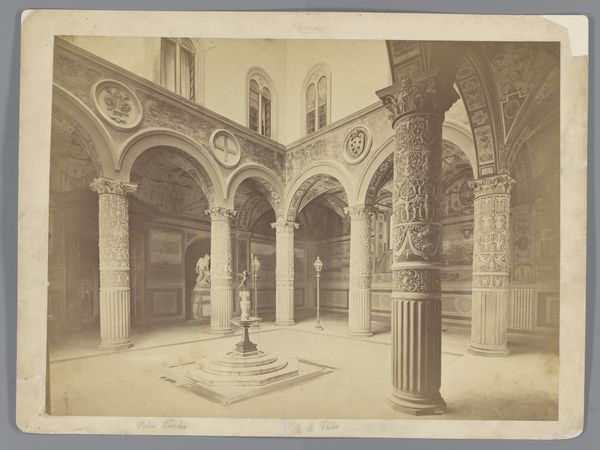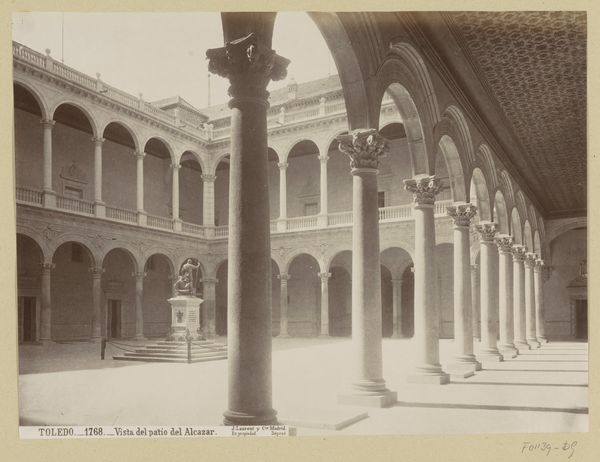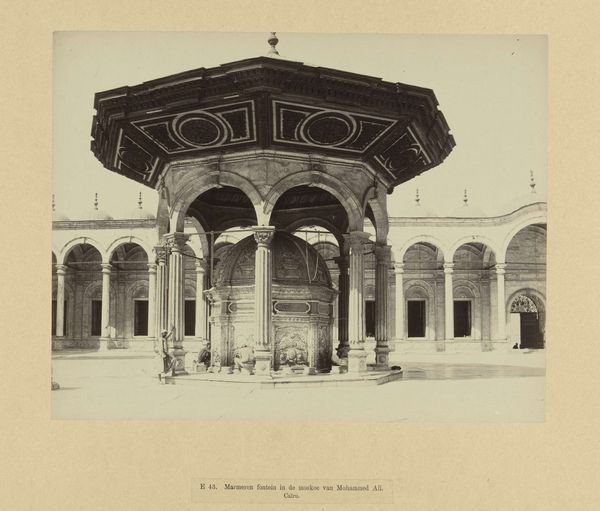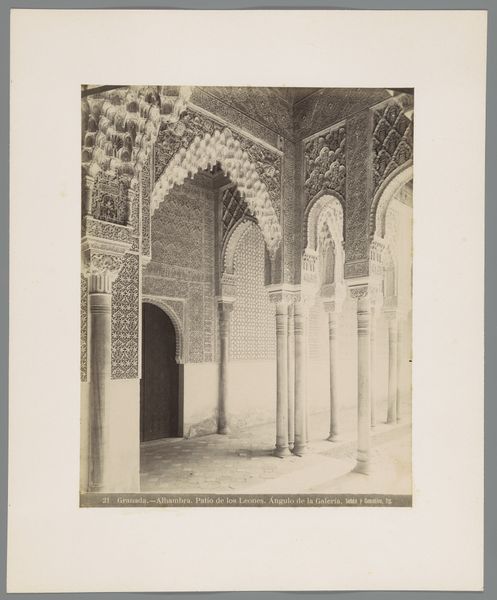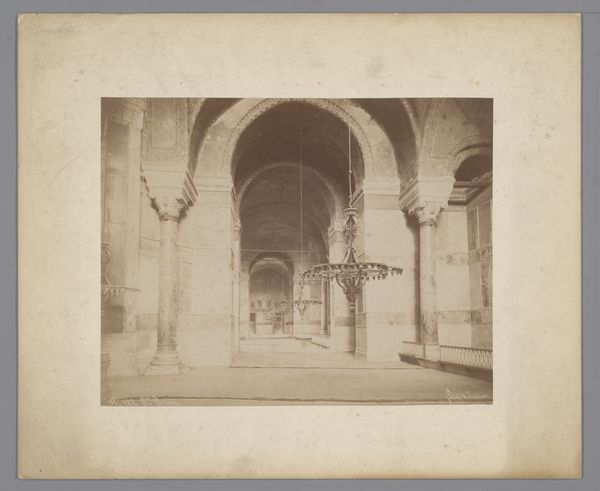
print, photography, gelatin-silver-print, architecture
# print
#
photography
#
gelatin-silver-print
#
cityscape
#
italian-renaissance
#
watercolor
#
architecture
Dimensions: height 317 mm, width 445 mm
Copyright: Rijks Museum: Open Domain
Editor: This is a photograph titled "Gezicht op de Cortile van het Palazzo Bevilacqua, Bologna," dating from between 1865 and 1907. It's a gelatin-silver print capturing the palazzo's courtyard. The symmetry is striking, but there’s also an undeniable stillness. What can you tell me about its historical significance? Curator: That stillness you observe is a deliberate aesthetic choice, reflective of photography's role in the 19th century's burgeoning historical consciousness. Photographs like these became ways to document and, in a sense, "freeze" culturally significant sites. The Palazzo Bevilacqua, a product of the Italian Renaissance, spoke of a specific era of power and artistic achievement. Editor: So, the photograph is not just documenting the building but also idealizing a past era? Curator: Exactly. Think about the rise of nation-states during this period. Places like Bologna were invested with meaning, tied to ideas of cultural heritage. Photographs of such buildings served as visual affirmations of a shared Italian identity, subtly reinforcing those historical narratives and the political status quo that championed them. Notice how the architecture is meticulously framed, lending it an almost idealized perfection. Does that contribute to its historical power? Editor: It definitely makes it seem less like a snapshot and more like an intentional statement. I hadn't considered the role of photography in nation-building before. Curator: The seemingly neutral gaze of the camera can be deceptive. Consider the patronage of the Bevilacqua family, whose power this Palazzo symbolizes. Photography was also becoming accessible, reaching audiences beyond the elite circles, so photographs of aristocratic buildings made them into something of public property, open to scrutiny. What would change in how the site was percieved? Editor: That adds a whole new layer of complexity, I can see now there's more to unpack here than just architectural photography. Curator: Precisely, and perhaps you can see how that scrutiny may reveal as much of social dynamics than the beauty of the facade.
Comments
No comments
Be the first to comment and join the conversation on the ultimate creative platform.


